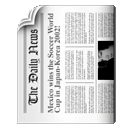Поиск :
Личный кабинет :
Электронный каталог: Chekhovsky, V. - Observation of the Charged-Particle Multiplicity Dependence of *s&sub(*q(2S))/*s&sub(J/*q) in p-P...
Chekhovsky, V. - Observation of the Charged-Particle Multiplicity Dependence of *s&sub(*q(2S))/*s&sub(J/*q) in p-P...

Статья
Автор: Chekhovsky, V.
Physical Review Letters: Observation of the Charged-Particle Multiplicity Dependence of *s&sub(*q(2S))/*s&sub(J/*q) in p-P...
б.г.
ISBN отсутствует
Автор: Chekhovsky, V.
Physical Review Letters: Observation of the Charged-Particle Multiplicity Dependence of *s&sub(*q(2S))/*s&sub(J/*q) in p-P...
б.г.
ISBN отсутствует
Статья
Chekhovsky, V.
Observation of the Charged-Particle Multiplicity Dependence of *s&sub(*q(2S))/*s&sub(J/*q) in p-Pb Collisions at 8.16 TeV / V.Chekhovsky, S.Afanasiev, V.Alexakhin, D.Budkouski, I.Golutvin, I.Gorbunov, V.Karjavine, O.Kodolova, V.Korenkov, A.Lanev, A.Malakhov, V.Matveev, A.Nikitenko, V.Palichik, V.Perelygin, M.Savina, V.Shalaev, S.Shmatov, S.Shulha, V.Smirnov, O.Teryaev, N.Voytishin, B.S.Yuldashev, A.Zarubin, I.Zhizhin, Z.Tsamalaidze, [CMS Collab.]. – Text : electronic // Physical Review Letters. – 2025. – Vol. 135, No. 9. – P. 092301. – URL: https://doi.org/10.1103/c9wp-5tq3. – Bibliogr.: 87.
Bound states of charm and anticharm quarks, known as charmonia, have a rich spectroscopic structure that can be used to probe the dynamics of hadron production in high-energy hadron collisions. Here, the cross section ratio of excited (ψ)(2S)) and ground state (J/ψ) vector mesons is measured as a function of the charged-particle multiplicity in proton-lead (pPb) collisions at a center-of-mass (CM) energy per nucleon pair of 8.16 TeV. The data corresponding to an integrated luminosity of 175 nb&sup(−1) were collected using the CMS detector. The ratio is measured separately for prompt and nonprompt charmonia in the transverse momentum range 6.5 < p&sub(T) < 30 GeV and in four rapidity ranges spanning −2.865 < y&sub(CM) < 1.935. For the first time, a statistically significant multiplicity dependence of the prompt cross section ratio is observed in proton-nucleus collisions. There is no clear rapidity dependence in the ratio. The prompt measurements are compared with a theoretical model which includes interactions with nearby particles during the evolution of the system. These results provide additional constraints on hadronization models of heavy quarks in nuclear collisions.
ОИЯИ = ОИЯИ (JINR)2025
Спец.(статьи,препринты) = С 343 в - Взаимодействие протонов с ядрами (Z>2). Изобарно- аналоговые состояния
Chekhovsky, V.
Observation of the Charged-Particle Multiplicity Dependence of *s&sub(*q(2S))/*s&sub(J/*q) in p-Pb Collisions at 8.16 TeV / V.Chekhovsky, S.Afanasiev, V.Alexakhin, D.Budkouski, I.Golutvin, I.Gorbunov, V.Karjavine, O.Kodolova, V.Korenkov, A.Lanev, A.Malakhov, V.Matveev, A.Nikitenko, V.Palichik, V.Perelygin, M.Savina, V.Shalaev, S.Shmatov, S.Shulha, V.Smirnov, O.Teryaev, N.Voytishin, B.S.Yuldashev, A.Zarubin, I.Zhizhin, Z.Tsamalaidze, [CMS Collab.]. – Text : electronic // Physical Review Letters. – 2025. – Vol. 135, No. 9. – P. 092301. – URL: https://doi.org/10.1103/c9wp-5tq3. – Bibliogr.: 87.
Bound states of charm and anticharm quarks, known as charmonia, have a rich spectroscopic structure that can be used to probe the dynamics of hadron production in high-energy hadron collisions. Here, the cross section ratio of excited (ψ)(2S)) and ground state (J/ψ) vector mesons is measured as a function of the charged-particle multiplicity in proton-lead (pPb) collisions at a center-of-mass (CM) energy per nucleon pair of 8.16 TeV. The data corresponding to an integrated luminosity of 175 nb&sup(−1) were collected using the CMS detector. The ratio is measured separately for prompt and nonprompt charmonia in the transverse momentum range 6.5 < p&sub(T) < 30 GeV and in four rapidity ranges spanning −2.865 < y&sub(CM) < 1.935. For the first time, a statistically significant multiplicity dependence of the prompt cross section ratio is observed in proton-nucleus collisions. There is no clear rapidity dependence in the ratio. The prompt measurements are compared with a theoretical model which includes interactions with nearby particles during the evolution of the system. These results provide additional constraints on hadronization models of heavy quarks in nuclear collisions.
ОИЯИ = ОИЯИ (JINR)2025
Спец.(статьи,препринты) = С 343 в - Взаимодействие протонов с ядрами (Z>2). Изобарно- аналоговые состояния
 На полку
На полку 
